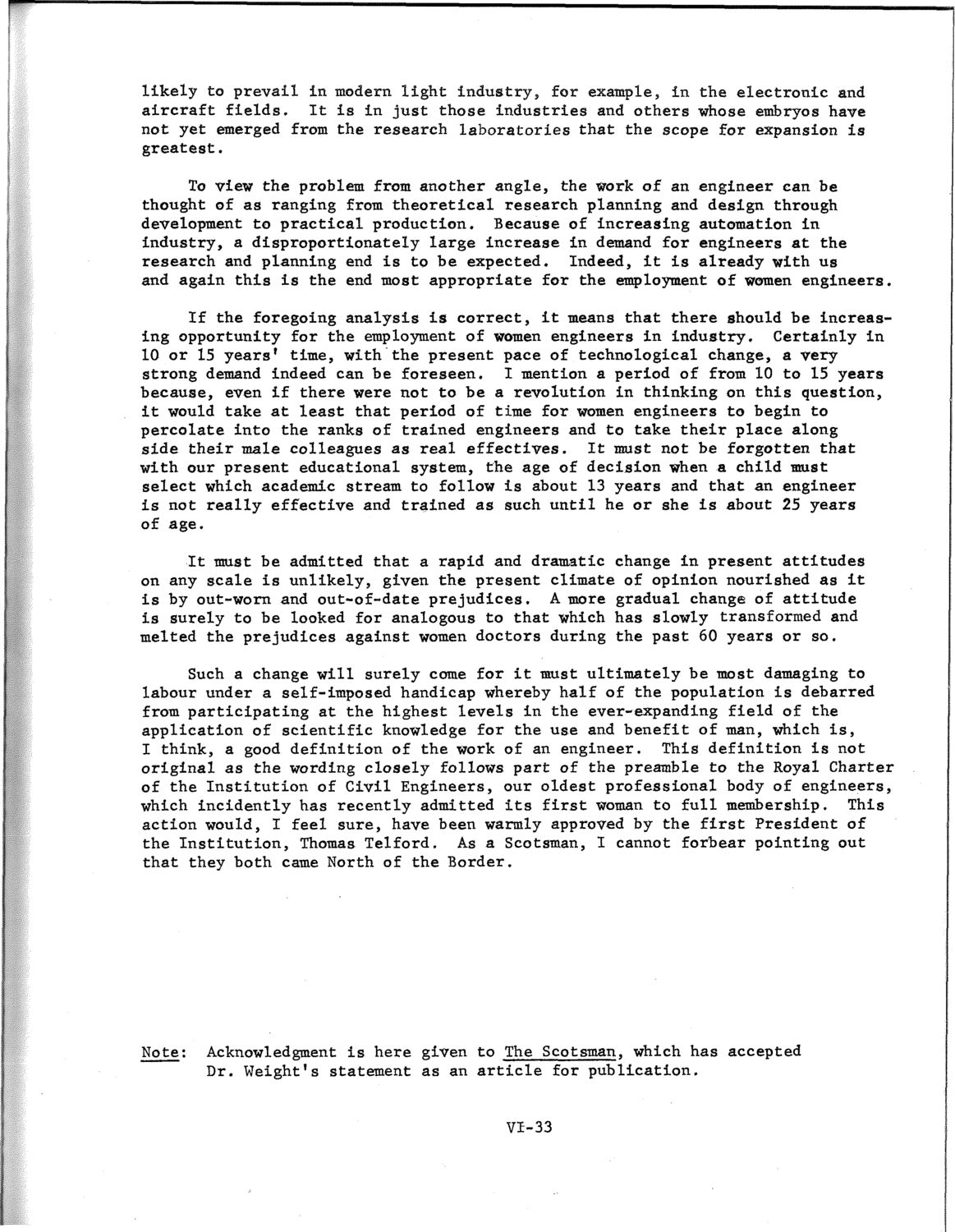| |
| |
Caption: SWE - Proceedings of the First International Conference of Women Engineers and Scientists
This is a reduced-resolution page image for fast online browsing.

EXTRACTED TEXT FROM PAGE:
likely to prevail in modern light industry, for example, in the electronic and aircraft fields. It is in just those industries and others whose embryos have not yet emerged from the research laboratories that the scope for expansion is greatest. To view the problem from another angle, the work of an engineer can be thought of as ranging from theoretical research planning and design through development to practical production. Because of increasing automation in industry, a disproportionately large increase in demand for engineers at the research and planning end is to be expected. Indeed, it is already with us and again this is the end most appropriate for the employment of women engineers. If the foregoing analysis is correct, it means that there should be increasing opportunity for the employment of women engineers in industry. Certainly in 10 or 15 years' time, with the present pace of technological change, a very strong demand indeed can be foreseen. I mention a period of from 10 to 15 years because, even if there were not to be a revolution in thinking on this question, it would take at least that period of time for women engineers to begin to percolate into the ranks of trained engineers and to take their place along side their male colleagues as real effectives. It must not be forgotten that with our present educational system, the age of decision when a child must select which academic stream to follow is about 13 years and that an engineer is not really effective and trained as such until he or she is about 25 years of age. It must be admitted that a rapid and dramatic change in present attitudes on any scale is unlikely, given the present climate of opinion nourished as it is by out-worn and out-of-date prejudices. A more gradual change of attitude is surely to be looked for analogous to that which has slowly transformed and melted the prejudices against women doctors during the past 60 years or so. Such a change will surely come for it must ultimately be most damaging to labour under a self-imposed handicap whereby half of the population is debarred from participating at the highest levels in the ever-expanding field of the application of scientific knowledge for the use and benefit of man, which is, I think, a good definition of the work of an engineer. This definition is not original as the wording closely follows part of the preamble to the Royal Charter of the Institution of Civil Engineers, our oldest professional body of engineers, which incidently has recently admitted its first woman to full membership. This action would, I feel sure, have been warmly approved by the first President of the Institution, Thomas Telford. As a Scotsman, I cannot forbear pointing out that they both came North of the Border. Note: Acknowledgment is here given to The Scotsman, which has accepted Dr. Weight's statement as an article for publication. VI-33
| |